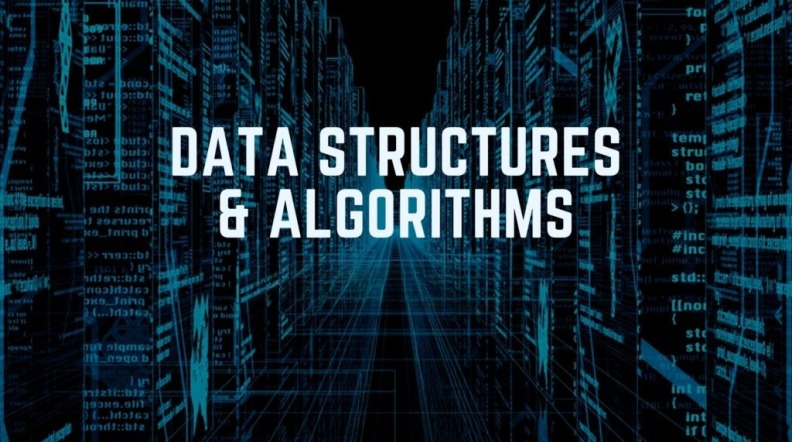Best Programming Language to Learn Data Structures and Algorithms: A Comprehensive Guide






Choosing the right programming language to dive into data structures and algorithms can shape your future in software development, competitive programming, or data science. This guide meticulously compares languages, focusing on how they handle complex concepts and provide a smooth learning curve. It’s crucial to select a language that not only aligns with your goals but also enhances your problem-solving skills.
In the journey of mastering data structures and algorithms, understanding the core characteristics of each programming language plays a pivotal role. Whether you aim for a desired job role in tech giants or wish to excel in coding interviews, knowing which language to learn becomes your first step. This guide aims to ease this decision-making process, presenting a comprehensive analysis of top programming languages.
Exploring the Landscape of Programming Languages
The world of programming languages is vast, with each language designed to serve specific purposes. From scripting to functional languages, the choice is abundant. However, when it comes to learning data structures and algorithms, not all languages are created equal. This section sheds light on the diverse programming language landscape, setting the stage for a deeper dive into which languages excel in teaching these crucial computer science concepts.
The Significance of Data Structures and Algorithms
Data structures and algorithms form the backbone of programming, offering efficient ways to store and manipulate data. Their understanding is not just academic; it’s practical, enabling developers to solve complex problems with optimized solutions. This knowledge is indispensable, whether you’re developing software, enhancing system performance, or tackling algorithmic challenges in competitive programming.
How Programming Languages Influence Learning
The choice of programming language significantly impacts the learning trajectory of data structures and algorithms. While some languages offer simplicity and readability, others provide a closer look at the machine’s workings. This juxtaposition affects not only the ease with which concepts are grasped but also the depth of understanding one achieves. The right language can demystify complex topics, making the learning journey more intuitive.
The Top Contenders for Learning Data Structures and Algorithms
When it comes to the best languages for mastering data structures and algorithms, a few stand out from the crowd. Python, C++, Java, JavaScript, C, and PHP each offer unique advantages for learners. This section will explore how each language caters to the needs of aspiring developers, focusing on their features, ecosystems, and the resources available for mastering data structures and algorithms.
1. Python
Python, a general-purpose programming language, has emerged as a top choice for beginners and professionals alike. Its simplistic syntax and powerful libraries make it ideal for data science, algorithmic problems, and coding interviews. Languages like Python allow learners to focus on solving problems rather than grappling with complex syntax, making it a preferred starting point for many.
Features of Python Programming Language
Python is distinguished by its dynamically typed nature, which simplifies coding and debugging. This feature, combined with Python code’s readability, allows developers to implement complex data structures and algorithms efficiently. Python’s comprehensive standard library further supports a wide range of programming tasks, from web development to data analysis.
Starting with Data Structures and Algorithms in Python
Embarking on the journey of learning data structures and algorithms (DS Algo) in Python sets a solid foundation for understanding core concepts. Python’s syntax simplicity aids in grasifying intricate algorithms and data structures, allowing learners to focus on logic rather than language complexities. This approach not only builds a strong base but also prepares individuals for advanced problem-solving.
Resources to Master Python for Data Structures and Algorithms
A plethora of resources are available for mastering DS Algo in Python, catering to different learning styles. From online tutorials and courses to comprehensive textbooks, learners can choose materials that best fit their pace and preferences. Community forums and coding challenge websites also offer practical experience, helping individuals to apply their knowledge and prepare for coding interviews.
2. C++
C++ stands as a robust language to learn data structures and algorithms, renowned for its efficiency and control over system resources. Learning how to implement advanced data structures like hash tables and solving problems based on these concepts in C++ can significantly benefit coding interviews. C++, being a subset of C, also provides a deeper understanding of how systems operate, making it a valuable language for aspiring software engineers.
Characteristics of C++ Programming Language
C++ is characterized by its strong typing and object-oriented features, offering a blend of low-level and high-level programming capabilities. This combination allows developers to write efficient and scalable code, crucial for implementing complex data structures and algorithms. The language’s standard template library further simplifies these tasks by providing ready-to-use templates.
Diving into Data Structures and Algorithms with C++
Delving into data structures and algorithms with C++ challenges learners to think critically and solve complex problems efficiently. The language’s syntax and semantics encourage a deeper understanding of memory management and data manipulation. This rigorous approach equips learners with the skills needed to tackle algorithmic challenges in competitive programming and professional development.
C++ Learning Resources for Enthusiasts
The internet is rich with resources for learners eager to master C++ for data structures and algorithms. From online platforms offering interactive courses to comprehensive books written by industry experts, there’s no shortage of materials to guide one’s learning journey. Participating in coding competitions can also provide practical experience and exposure to a wide range of algorithmic problems.
3. Java
Java, a statically typed, general-purpose, and object-oriented programming language, is widely used in enterprise environments and competitive programming. Its robustness, portability, and extensive library make it an excellent choice for learning data structures and algorithms. Java’s approach to solving complex problems, combined with its clear syntax, offers a balanced learning experience for both beginners and experienced programmers.
Unique Aspects of Java Programming Language
Java stands out for its platform independence, allowing Java code to run on any device supporting the Java Virtual Machine (JVM). This feature, alongside its strong memory management and extensive collection of libraries, simplifies the implementation of complex data structures and algorithms. Java’s emphasis on object-oriented principles further aids in designing scalable and maintainable software systems.
Java’s Approach to Data Structures and Algorithms
Java simplifies the learning of data structures and algorithms through its object-oriented design, allowing learners to encapsulate properties and behaviors within classes. This encapsulation makes it easier to visualize and manipulate data as objects, thus providing a more intuitive grasp of complex concepts. Java’s extensive standard library further supports this by offering pre-built data structures like arrays, lists, and maps, making it less daunting for beginners to dive into algorithmic problems.
Best Java Resources for Aspiring Developers
For those eager to master Java, resources like the official Oracle documentation and “Head First Java” provide a solid foundation. Online platforms such as Codecademy and Coursera offer interactive courses tailored to both beginners and advanced learners. Additionally, engaging in coding challenges on websites like HackerRank can sharpen one’s problem-solving skills, making these resources invaluable for anyone looking to excel in Java programming for data structures and algorithms.
4. JavaScript
JavaScript, widely recognized for its role in web development, also serves as a powerful tool for learning data structures and algorithms. Its versatility in running both on client and server sides adds to its appeal for developers. JavaScript’s event-driven nature and support for asynchronous programming make it an excellent choice for algorithmic challenges, particularly those involving web applications and services.
JavaScript Programming Features
JavaScript stands out with its dynamic typing, allowing variables to hold any type of data without explicit declaration. This feature, while offering flexibility, also challenges developers to think critically about data types and operations. JavaScript’s first-class functions, where functions are treated as variables, enable higher-order functions that are essential in functional programming. These characteristics make JavaScript a unique language for experimenting with data structures and algorithms.
JavaScript for Data Structures and Algorithms
Despite its reputation for front-end development, JavaScript’s engine is robust enough to handle complex data structures and algorithms. Learners can easily implement and manipulate data structures, from arrays to trees, directly in their browsers. Additionally, JavaScript’s event loop model introduces a practical perspective on algorithms dealing with asynchronous operations, a common scenario in modern web applications.
Top JavaScript Learning Materials
Aspiring developers can find a wealth of JavaScript resources online. “Eloquent JavaScript” is a highly recommended book that covers the basics to advanced topics, including data structures and algorithms. Websites like freeCodeCamp and Udemy offer structured courses that cater to various skill levels. For hands-on practice, platforms such as LeetCode provide countless algorithmic challenges that can be tackled using JavaScript, making these resources indispensable for learners.
5. C
The C programming language, known for its efficiency and control over system resources, is a fundamental tool for learning data structures and algorithms. Its minimalistic syntax and the necessity to manually manage memory make it an excellent medium for understanding the underlying mechanisms of data structures and the efficiency of algorithms.
Core Features of C Programming Language
C’s hallmark is its close-to-hardware operations, allowing direct manipulation of memory through pointers. This control, while complex, offers a deep understanding of how data structures are implemented and manipulated at the lowest level. C’s procedural nature supports linear, straightforward thinking, essential for devising and understanding algorithms. Despite its age, C’s efficiency and relevance in system-level programming make it an enduring choice for foundational programming education.
Learning Data Structures and Algorithms with C
Learning data structures and algorithms in C requires a hands-on approach, starting with basic structures like arrays and advancing to more complex ones such as linked lists and trees. This journey not only strengthens problem-solving skills but also deepens the understanding of memory management and algorithm efficiency. C’s standard library, while lean, includes functions that support these learning endeavors, making it a practical choice for diving into the intricacies of algorithms.
Essential C Programming Resources
To master data structures and algorithms in C, resources like “The C Programming Language” by Kernighan and Ritchie, and online tutorials from websites such as GeeksforGeeks, are invaluable. For interactive learning, platforms like Codecademy offer courses that include hands-on coding exercises. Engaging in coding challenges on HackerRank can also bolster one’s skills, making these resources essential for any aspiring C programmer.
6. PHP
PHP, predominantly known for server-side web development, also encompasses capabilities for learning data structures and algorithms. Its vast array of built-in functions and support for object-oriented programming make it a practical choice for implementing and understanding complex data structures and algorithms within web applications.
Understanding PHP Programming Language
PHP offers simplicity in syntax and a forgiving error management system, making it approachable for beginners. Its dynamic typing and extensive standard library facilitate the quick implementation of diverse data structures. PHP’s ability to interact with databases and handle web requests adds a real-world context to algorithmic challenges, providing a comprehensive learning environment for web-centric data manipulation tasks.
PHP in the World of Data Structures and Algorithms
In PHP, data structures such as arrays are deeply integrated, serving both as simple lists and associative arrays. This flexibility allows learners to easily grasp the concepts of data manipulation and storage. The language’s support for linked lists and other complex structures, though less direct than in languages like C or Java, can still be achieved through object-oriented programming, demonstrating PHP’s adaptability in algorithmic problem-solving.
PHP Learning Resources
Resources for mastering PHP in the context of data structures and algorithms include the official PHP documentation for foundational knowledge. Books like “PHP Data Structures and Algorithm” by Mizanur Rahman provide a targeted approach to learning. Online platforms such as Udemy and Pluralsight offer comprehensive courses that range from beginner to advanced levels, equipping learners with the necessary skills to tackle web-based algorithmic challenges effectively.
Specialty Languages for Niche Interests
While mainstream programming languages offer broad applications, niche interests often benefit from specialty languages designed to address specific challenges. Whether it’s for competitive programming, dealing with advanced data structures, or exploring new computational paradigms, these specialized languages provide tailored environments that enhance problem-solving abilities and deepen understanding of complex concepts, catering to enthusiasts and professionals alike.
Competitive Programming Languages
In the realm of competitive programming, the choice of language can significantly influence performance and outcomes. While some prefer languages that offer rapid development and ease of use, others opt for those that offer fine-grained control and efficiency. The selection often comes down to personal preference, the specific challenge at hand, and the rules of the competition. Whichever language a competitor chooses, mastering it can lead to notable success in various coding competitions.
C and C++: The Titans of Competitive Programming
C and C++ stand as the giants in competitive programming due to their unmatched speed and control over system resources. These languages allow programmers to manipulate data and memory efficiently, an essential factor in competitions where performance and optimization are critical. Many also prefer C or C++ because they lay a strong foundation for understanding more complex programming concepts, making them ideal for tackling algorithmic problems. Furthermore, the vast majority of coding interviews and contests are designed with these languages in mind, emphasizing their importance in the competitive programming landscape.
Python: A Versatile Choice for Competitions
Python, a general-purpose programming language, has gained popularity in competitive programming for its straightforward syntax and the speed at which one can develop solutions. It’s particularly favored in data science competitions and those that require writing code to solve algorithmic problems quickly. While Python may not always offer the same level of performance as C or C++, its extensive libraries and ease of writing make it a strong choice for competitors who prioritize rapid development and readability. Additionally, mastering Python can be advantageous for those looking to secure a desired job role, as it’s a sought-after skill in many industries.
Languages for Advanced Data Structures
When dealing with advanced data structures, the choice of programming language becomes crucial as it can affect both the complexity of the solution and the efficiency of its implementation. Languages that offer robust standard libraries and support for complex data management are often preferred. This is because they can handle the intricacies of advanced data structures more effectively, enabling developers to focus more on solving problems than on the mechanics of the language itself.
Java: A Strong Option for Complex Structures
Java is renowned for its comprehensive set of libraries and tools that simplify the management of complex data structures. Its object-oriented nature facilitates the modeling of real-world entities, making it a powerful tool for developing sophisticated algorithms and data management systems. Java’s automatic memory management also alleviates the burden of manual memory allocation and garbage collection, allowing developers to concentrate on the logic of their algorithms. These features make Java an excellent choice for projects that require the manipulation of intricate data structures.
C++: Efficiency in Advanced Data Management
C++ excels in scenarios that demand high efficiency and speed in data management. With its fine control over system resources and support for advanced data structures through the Standard Template Library (STL), C++ enables developers to implement complex algorithms with optimal performance. The language’s versatility in handling both high-level abstractions and low-level system operations makes it a preferred choice for projects where efficiency and control are paramount. For these reasons, C++ continues to be a dominant force in applications requiring sophisticated data management solutions.
The Learning Journey
Embarking on the journey to master data structures and algorithms is both challenging and rewarding. It starts with selecting a programming language that not only aligns with one’s learning objectives but also offers ample resources for growth. This journey is characterized by a continuous loop of learning, practicing, and applying concepts to solve real-world problems. It’s a path that demands dedication, but through persistence, anyone can achieve proficiency in data structures and algorithms.
Getting Started with Your Chosen Language
Beginning to learn a new programming language can be daunting, yet it’s the first step toward mastering data structures and algorithms. It’s crucial to start with the basics: understanding syntax, familiarizing oneself with the core concepts, and gradually progressing to more complex topics. Resources like online tutorials, books, and coding platforms can be immensely helpful. Practicing by writing code, even if it’s simple Python scripts or basic C++ programs, lays a solid foundation for more advanced study.
Building a Strong Foundation in Data Structures and Algorithms
A strong foundation in data structures and algorithms is essential for any programmer looking to excel in their field. This involves understanding the theory behind various data structures, like arrays, lists, trees, and graphs, and how they can be used to store and manipulate data efficiently. Similarly, algorithms are the strategies for solving problems. Learning about sorting, searching, and dynamic programming helps in developing efficient solutions to complex problems. This knowledge is crucial for both academic pursuits and professional tasks, such as coding interviews.
Advanced Concepts and Problem-Solving Techniques
As one progresses, delving into advanced concepts and problem-solving techniques becomes imperative. This includes exploring more complex data structures, understanding intricate algorithms like those involved in dynamic programming, and mastering the art of optimizing solutions. Tackling coding challenges on platforms that offer a wide range of problems can be particularly beneficial. These challenges not only improve problem-solving skills but also prepare individuals for competitive programming and technical interviews.
Community Resources and Forums for Learning Support
Learning is significantly enhanced by engaging with community resources and forums. These platforms offer an avenue for sharing knowledge, seeking advice, and collaborating on problem-solving. Whether it’s discussing the best approach to a challenging algorithm or seeking clarification on a particular data structure, the collective wisdom of the community can provide invaluable insights. Moreover, participating in coding challenges and competitions can foster a sense of camaraderie among learners, making the journey more enjoyable and enriching.
Making a Career with Programming Skills
Mastering programming skills, particularly in data structures and algorithms, opens a wide array of career opportunities. From software development to data analysis, and even into emerging fields like machine learning and artificial intelligence, the demand for skilled programmers is high. Companies value the ability to solve complex problems efficiently, making expertise in data structures and algorithms a highly sought-after skill. Pursuing a career in programming not only promises a rewarding professional journey but also offers the chance to contribute to technological advancements.
Career Paths for Data Structure and Algorithm Experts
Experts in data structures and algorithms have a broad spectrum of career paths available to them. These range from software engineering and system design to data science and machine learning roles. Companies, especially those focused on technology and innovation, are on the lookout for individuals who can efficiently solve complex problems and optimize systems. Additionally, expertise in data structures and algorithms is crucial for roles in competitive programming and academic research, further broadening the career opportunities for skilled professionals.
Upskilling and Certification for Career Advancement
For professionals looking to advance their careers, upskilling and obtaining certifications in data structures, algorithms, and programming languages are vital steps. Continuous learning and staying updated with the latest technological advancements can significantly enhance one’s marketability. Certification programs offered by reputed institutions and online platforms not only validate one’s skills but also demonstrate a commitment to professional growth. Additionally, participating in coding competitions and contributing to open-source projects can further bolster one’s portfolio, making them more attractive to potential employers.
The Future of Programming Languages in Data Structures and Algorithms
The landscape of programming languages in the context of data structures and algorithms is continually evolving. As technology advances, new programming paradigms and languages emerge, offering more efficient ways to handle data and solve problems. The ongoing development of artificial intelligence and machine learning is also influencing the choice of programming languages, with a focus on those that can easily manipulate large datasets and perform complex calculations. Looking ahead, the future of programming will likely see languages that are more intuitive, versatile, and capable of meeting the growing demands of modern computing challenges.
Emerging Languages and Technologies to Watch
In the realm of programming, the landscape is constantly shifting, with new languages and technologies emerging that promise to redefine how we approach data structures and algorithms. Among these, languages that offer advanced features such as dynamic memory allocation and access to the memory are gaining traction. These languages are designed to work seamlessly with modern operating systems and embedded systems, making them ideal for a variety of applications. As these new tools continue to evolve, they will undoubtedly play a significant role in shaping the future of programming, particularly in areas requiring high efficiency and speed.
The Evolution of Programming Paradigms
The journey of programming paradigms has been marked by significant milestones, transitioning from procedural to object-oriented, and now to functional languages. This evolution reflects a growing understanding of the need for more efficient ways to write algorithms and manage data. Functional languages, in particular, offer a rich set of features that facilitate the writing of cleaner, more modular code, which is especially beneficial in complex projects. Moreover, the shift toward these paradigms has been supported by the development of virtual machines and high-level programming languages, which collectively enhance the programmer’s ability to tackle sophisticated problems.
Wrapping Up: Your Path to Mastering Data Structures and Algorithms
Mastering data structures and algorithms is a journey that goes beyond merely choosing a programming language. It involves understanding the underlying principles that govern how data is organized, manipulated, and accessed. While languages like Python, C++, and Java each offer unique advantages, the best approach is to focus on the concepts and then apply them across different languages. This strategy ensures a solid foundation that will serve you well, regardless of the specific programming challenges you face. As you progress, remember that the landscape of programming is always evolving, and staying curious and adaptable is key to success.
Choosing the Right Programming Language for You
Choosing the right programming language for learning data structures and algorithms can seem daunting, given the plethora of options available. Each language, from Python with its simplicity and rich set of built-in functions to C++ and its efficiency in memory management, offers distinct advantages. Your choice should be guided by your current skill level, the specific areas of application you’re interested in, and the types of projects you aspire to work on. For beginners, languages that offer clear syntax and a gentle learning curve, like Python, can be particularly beneficial. Meanwhile, those interested in system-level programming might find C or C++, which are written in C and provide more direct access to the memory, more fitting.
The Continuous Learning Process in Programming
The field of computer science is vast, and programming is a discipline where the learning never stops. From the spectrum from Python, known for its simplicity, to languages that are syntactically much more complex, there’s always something new to master. Static typing, understanding space complexity, and becoming proficient in using data types like lists are just the beginning. As you dive deeper, you’ll encounter compiled languages and explore advanced concepts that challenge your problem-solving skills. Remember, the best language to learn is the one that keeps you engaged and challenges you to think differently about solving problems. Embrace the journey, leverage the community, and never stop learning.